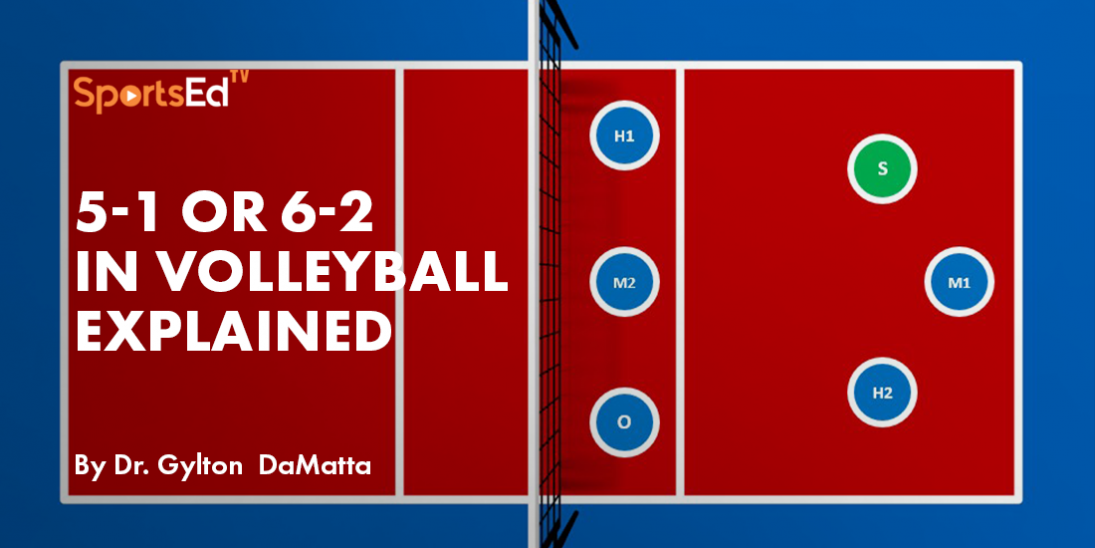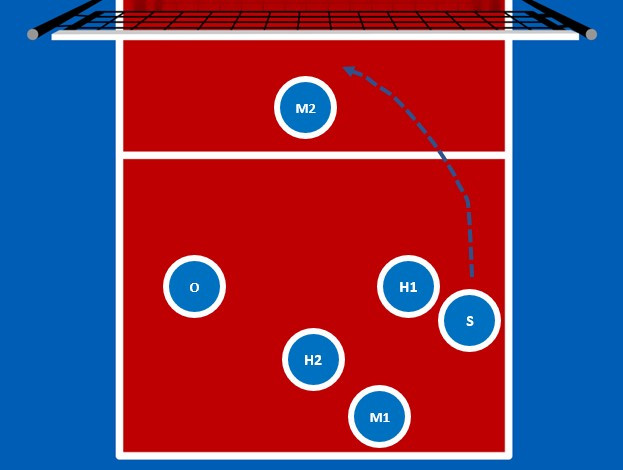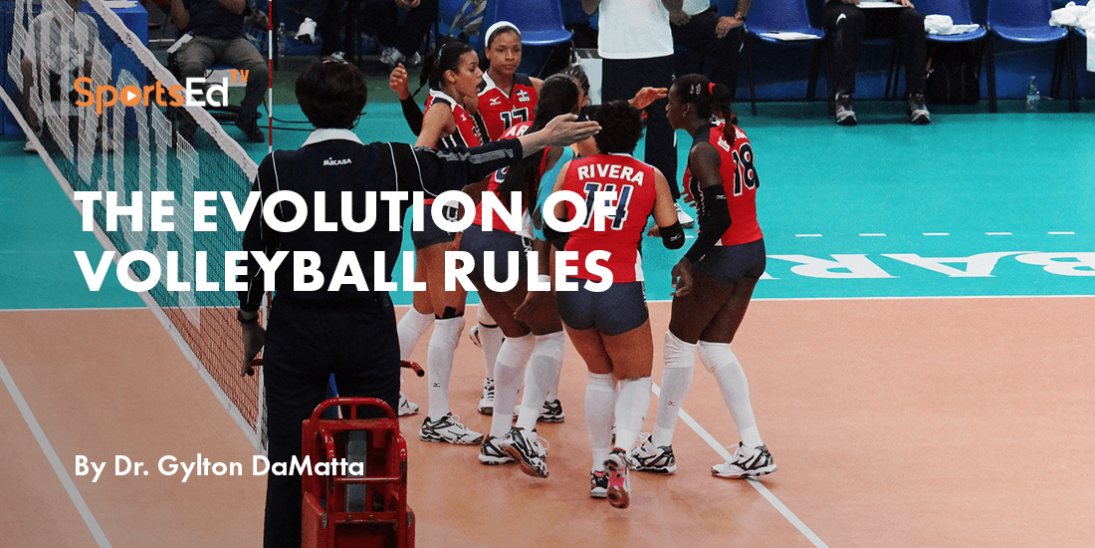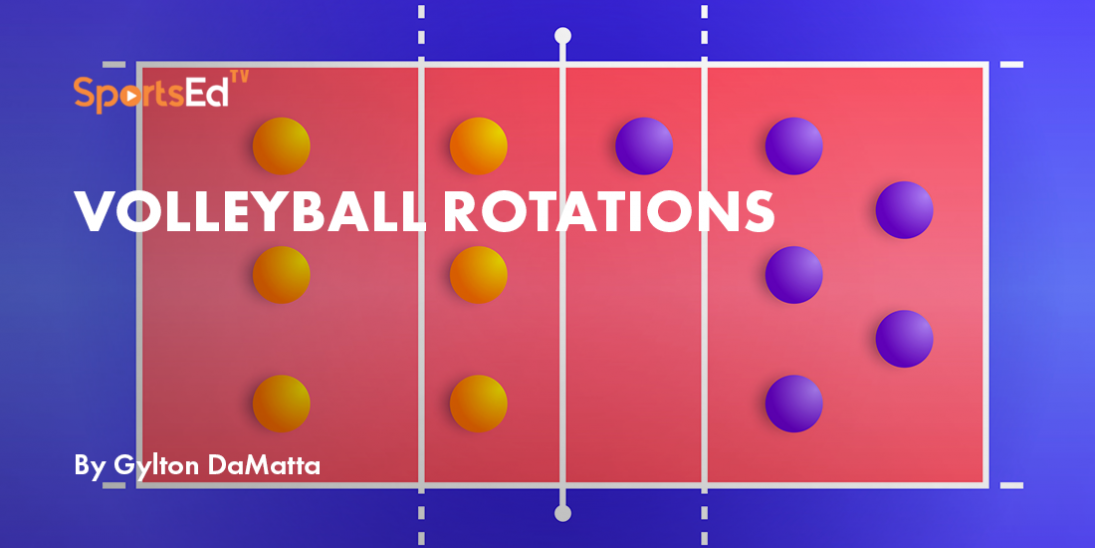Volleyball
Welcome and thanks for visiting...

5-1 and 6-2 Systems of Play in Volleyball


In our prior article about volleyball rotations, we discussed the distinction between rotations and systems of play in volleyball. Despite the common usage of terms such as 5-1 rotation, it can lead to misinterpretation and confusion for many.
Every year, volleyball teams, whether at the middle school, high school, or collegiate level, must determine the most suitable system of play to enhance their competitiveness. The 5-1, 6-2, and 4-2 systems are among the options available, but the 5-1 and 6-2 are the most commonly used. In this blog, we'll briefly explore these systems, highlighting their advantages and disadvantages.
The systems of play in volleyball have undergone a transformation over time as coaches strive to organize their teams' offenses, defenses, coverage, and transitions. In the 5-1 system, coaches have at their disposal five skilled hitters and a highly skilled setter with the dexterity, precision, and physical ability to set specific passes that will help their team sideout score points and ultimately win matches. The choice of the best system of play depends heavily on the quality of the athletes or personnel on the team. From high school to professional levels, volleyball teams must first identify their primary passers, setters, best blockers, and top defensive players to assign them to their most efficient positions, such as passer-hitters, middle players, setters, and liberos. The best way to do it is by ranking players by their specialized positions. This will be critical for the composition of the teams and distributing them on the court so the team will be balanced and aligned throughout the set. I call this the theory of balance and alignment for tactical expertise.
It is important to note that the choice between the 5-1, 4-2, or 6-2 system of play has far-reaching effects on the development of talent within a country according to its volleyball culture. While coaches may base their decision on practical considerations, the lack of research-based evidence on the impact of early specialization on health, fitness, and long-term well-being in both young players and the general population highlights the need for a more developmentally appropriate and inclusive approach. According to experts, this approach has been shown to benefit both players' longevity and long-term fitness levels for athletes (Da Matta, 2004).

What is the 5-1 system in volleyball?
The 5-1 system often blends the serve-receive and the offensive system, meaning that five players will specialize in passing-hitting while one exceptional setter will take on the center-distribution role, distributing the ball to the five attackers. Regardless of the serve-receive rotation, the players' positions will adapt accordingly. The middle players will focus on spiking fast first-tempo sets, the outside hitters will be responsible for passing and spiking, and the opposite players will aim to block and spike from the back row. Since the introduction of the libero in 1998, coaches have embraced the option to substitute any hitter with a defensive specialist on the back row, according to their tactical goals.

5-1 system:
- Five players specialize in passing and hitting.
- One player is designated as the setter and controls the offense.
- The setter sets from most passes to maximize the team's ability to score points and win matches.
- The decision of which system to use depends on the quality of athletes available on the team.
- Teams must first identify their primary passers, setters, blockers, and defensive players to assign them to their designated positions.
The choice of which system to implement falls upon the players, captains, and coaches, as any of the systems can be utilized by any team. It's important to determine the most effective and efficient system for their particular team. To do so, coaches must test, observe, measure, and evaluate what system is more effective and what players' configurations are more efficient for the team. Ultimately, good coaches want to increase the capacity of performance of their teams, but then, during competitions, the team needs to perform.
Understanding the 5-1 system: Pros and cons
The 5-1 system is widely favored by coaches worldwide due to its consistency in set distribution, which is performed by a single player. This system has proven to be functional and efficient across all levels, from professional to interscholastic, due to the specialized roles assigned to each player. The 5-1 is the most commonly used system among volleyball teams, ranging from high school to the U.S. Olympic team, as it creates a more uniform set for the team's offense, with only one player responsible for the setting, regardless of their position in the front or back row.
Advantages of the 5-1 System:
- Consistent sets for the team's offense with only one player setting
- Consistent leadership on the court with one primary setter controlling the offense.
- Uses fewer players.
- Middle players can release faster to get into hitting lines, creating more options for pin players and opposite players to receive fast sets
Disadvantages of the 5-1 System:
- In three rotations, a team will have three top blockers in the front row, and in three other rotations, two very good hitters and blockers.
- Setters tend to be shorter than their counterparts due to specialization and the level of play
The 5-1 system of play in volleyball provides consistency in both sets and leadership on the court, while also utilizing fewer players. However, due to the specialization required in the 5-1 system, setters tend to be shorter than their counterparts and the team may face the disadvantage of having a front row with either three top blockers or two very good hitters and blockers.
What is the 6-2 system in volleyball?
The first number, 6, represents the number of hitters on the court, and the second number, 2, stands for the number of setters. The 6-2 system is a popular choice for collegiate athletics and high-school volleyball due to the increased number of substitutions allowed in these levels of competition, as compared to international volleyball, which only allows six substitutions in a match. A coach who implements a 6-2 system is guaranteed to always have three hitters/blockers in the front row, which they can use as an advantage to overcome their opponent’s attack. In order to effectively run a 6-2 system, a team must have at least nine to ten competitive players, including two skilled setters, two middle players, two to three passer-hitters, two right-side players, and one to two liberos. This system creates more opportunities for players to participate in the game, thus increasing the overall number of players who have the chance to play.


6-2 system:
- Two players are designated as setters, one in the front row and one in the back
- The front-row setter can switch to position two if they are also an outstanding blocker.
- Teams can utilize more players on the court in a more offensive manner, increasing participation and aggressive tactics.
- Teams may run the risk of high variability of sets and decreased team chemistry compared to the 5-1 system.
In volleyball, the 6-2 system entails designating one player to serve as the setter while in the back row and another as the right-side hitter in the front row. The player opposite to the setter may or may not switch to position 2, depending on their blocking skills. If they excel as blockers, coaches will choose to let them play in position 2 to stop the opponent's powerful outside hitters. As a result, the setter and the right-side player are always diagonal from each other on the court, with one always in the front row and the other in the back. When the setter rotates into position 4, coaches must make two substitutions, which will consume two out of the 12 substitutions available for every three rotations of a set. For this system to be effective, a team must have top setters who can perform at a high level as offensive distributors. Having two setters offers two different ways to deliver the attack and two different perspectives for decision-making, but it can be difficult to find two or three outstanding setters in a group of 20 players due to the distribution of talent and a lack of development during early ages. This is my professional opinion.
Advantages of the 6-2 System:
- 2 setters: Two setters provide two different ways of delivering the attack and two different perspectives for decision-making when faking blockers.
- Consistent front row: With a 6-2 system, a team will always have three hitters/blockers in the front row, which can be used as an advantage to overcome the opponent's attack.
- Increased opportunities for players: The 6-2 system creates more opportunities for players to participate in the game, as it requires a minimum of nine to ten competitive players.
- Improved blocking strategy: The 6-2 system allows coaches to position their middle players in a way that they can quickly release and hit fast first-tempo balls, creating more options for pin players and opposite players.
Disadvantages of the 6-2 System in Volleyball:
- Difficulty in finding top setters: It is difficult to find two or three outstanding setters in a group of 20 players due to the distribution of talent and the lack of early-age development of setters.
- Depletes substitutions: When the setter rotates into position 4, coaches will need to make two substitutions, depleting two out of the 12 subs available in every three rotations of a set.
- Setters tend to be shorter: Due to specialization, setters tend to be shorter than their counterparts, which can be a disadvantage in terms of blocking and reaching high balls.
In conclusion, there are both advantages and disadvantages to adopting either the 5-1 or 6-2 system in volleyball. On one hand, the 6-2 system provides the opportunity for a coach to utilize more players on the court, as it allows for more aggressive tactics from a blocking standpoint. However, this system also has a higher risk of variability in sets and a potential impact on team chemistry and communication. On the other hand, the 5-1 system offers a highly skilled and efficient setter who can control the pace of the offense and deceive the opponent's blocking system. It is important for coaches to use statistical analysis to determine which system and player dispositions are most effective and efficient for their team. The technical assessment of each player in their specialized positions is the key (Da Matta, 2021)
In our next article, we will break down the serve-receive formations for the 5-1

It is important to note that the adoption of developmentally appropriate practices is widely recognized as a principle for player development. This approach is encouraged in countries such as Canada, Brazil, Italy, France, Spain, Ukraine, Poland, and Japan, particularly for younger players up to U14, where the adoption of a 4-2 system is emphasized to develop more top setters. This information is based on knowledge from elite FIVB manuals and works from renowned instructors such as Dr. Doug Beal, Dr. Karl McGown, Dr. Horst Baache, Dr. Platonov, Mr. Herrera, Mr. Ejem, and Dr. Matsudaira.
Thank you!





